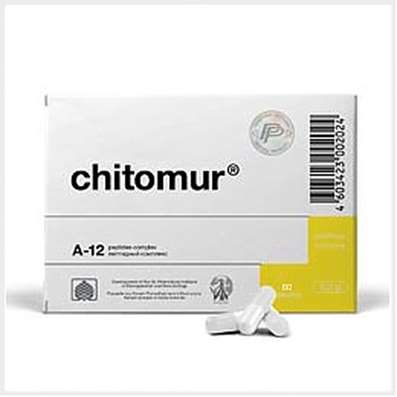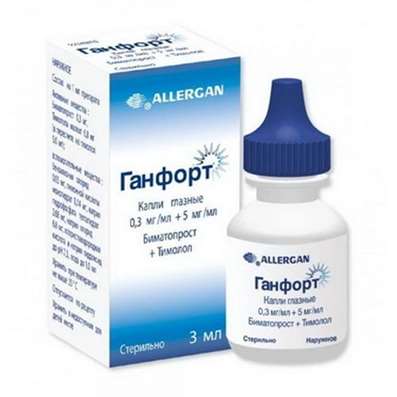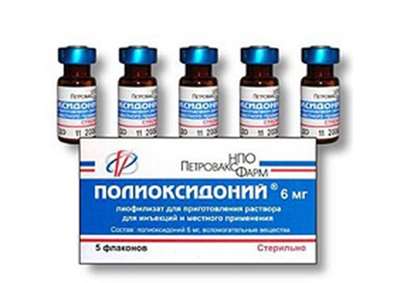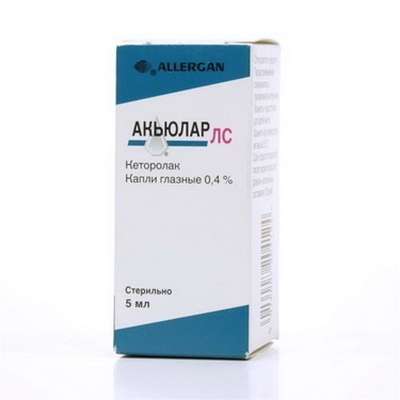Guidelines for the use of growth hormone for athletes. Part 1
01 Jun 2017
The basic guide to the use of human growth hormone is somatotropin.
The purpose of this article is to give you a good basic knowledge of the human growth hormone - somatropin and its competent use. Of course, it does not disclose all the nuances about the benefits of using samotropin, but at least this article should provide you with a solid enough knowledge to enable you to create your own cycle of use without problems. I do not want to provide you with a complex scientific report or technical background. I write this article from the point of view of the veteran of the seven-year use of human growth hormone - somatropin and an athlete using it as one of the tools to achieve his goals. I injected into my body tens of thousands of IU of human growth hormone - somatropin, carefully monitoring it and conducting tests and experiments on myself. So after this little foreword, let's look at this hormone called Human Growth Hormone - Somatotropin.
Not so many hormones that in recent years have caused more excitement and sensation than the human growth hormone somatropin. After numerous statements about the incredible loss of fat and the increase in muscle mass to fabulous levels that can not be explained in terms of genetics, human growth hormone - somatotropin - has been touted as a panacea for all bodybuilding problems. Depending on what kind of statistics you trust, you can see that 80% of professional athletes experiment with using or actively use human growth hormone as an addition to their training program.
What is human growth hormone - growth hormone?
Human growth hormone (somatotropin - also referred to as hGH, human growth hormone - somatotropin - or GH-growth hormone (somatotropin) is created by the pituitary gland in the basic form consisting of a chain of 191 amino acids .While we are young, human growth hormone is for the most part responsible for the correct The growth of bones, muscles and other tissues.If there is too little of this hormone in a body, a person can remain a dwarf if too much, a person can become a giant and / or suffer from abnormal growth deformations .When we become adults, the hormone the remaining human - growth hormone is responsible for the preservation of muscles, supports a healthy immune system, regulates aspects of our metabolic function related to increase fat metabolism and healthy body composition later in life, and maintains, and restores our skin and other tissues.
Our levels of human growth hormone - growth hormone - peak during adolescence and then begin to decline sharply, starting at 30 years of age. And to our 60 years, the daily secretion of human growth hormone - somatotropin may be only 10% of the amount which is produced in our body in youth. Many indicators of health in the elderly suffer just from this reduction of human growth hormone - somatropin. Here are some of the results of such processes:
• Increase the amount of fat;
• Decreased muscle mass;
• Deterioration of the texture of the skin, as a result of which it loses its former youthful appearance;
• Decreased bone strength, the onset of osteoporosis;
• Decreased brain function, loss of intelligence with age;
• Decreased sex drive;
• Decrease in the general physical and mental state;
• Sleep disorder, decreased sleep quality;
• Depression and fatigue.
The introduction of an additional amount of human growth hormone, which began to be used in the last 30 years, can change or improve these indicators in most people involved in hormone therapy. That's why you often hear about somatropin, they say, as a "fountain of youth" and other similar things. Its use can give a higher quality of life to those who are aging.
How a human growth hormone - is somatotropin produced in the body?
Human growth hormone - somatotropin - is secreted in the pituitary gland during pulsations, usually following a circadian rhythm. There are various ways to stimulate the secretion of human growth hormone, but the most powerful of them are short duration high intensity exercises and sleep. During the first few hours of sleep (the deep sleep stage - about 2 hours from the moment you fell asleep), somatostatin is turned off and the GGRH is turned on, and pulses of hGH-self-titanium are sent.
Growth hormone releasing hormone (GGRH) is produced by the hypothalamus and stimulates the secretion of human growth hormone-somatotropin, and HGH-somatotropin and IGF-1 create negative feedback, which means that their levels are high; This inhibits the production of GGRH, which, in turn, stops the production of more somatropin.
Somatostatin (CC), secreted by the hypothalamus, as well as other tissues, inhibits the secretion of human growth hormone - somatotropin - somatostatin responds to PGR and other stimulating factors such as low blood glucose concentration. High levels of IGF-1 also stimulate the secretion of somatostatin.
Ghrelin is a peptide hormone secreted in the stomach. Ghrelin binds to receptors on somatotrophic glands and actively stimulates the secretion of growth hormone. Ghrelin, as a stimulant for enhancing the secretory receptor of the hormone, actively stimulates the secretion of growth hormone. The ghrelin signal integrates with growth hormone-releasing hormone and somatostatin signals to monitor the timing and extent of growth hormone secretion.
After human growth hormone - somatotropin - is released, it has a very short period of life. It is usually metabolized and acts for half an hour. During this half an hour, it passes through the liver and other tissues and induces them to secrete a polypeptide hormone called Insulin-like Growth Factor (IGF-1).
How does the human growth hormone act?
As mentioned above, human growth hormone - somatotropin - does not last long, but for a short half-hour or so of the pituitary gland, it manifests itself through direct and indirect effects.
The direct consequences that are the result of the action of human growth hormone is the connection with the receptors of the target cells. Fat cells (adipocytes), as well as myocytes (muscle cells) have somatotropin receptors. On fat cells, human growth hormone - somatotropin - stimulates them to cleave triglycerides and inhibits the ability of fat cells to capture circulating lipids.
When human growth hormone - somatotropin - is sent to the liver, one of the results of its passage through the liver is the secretion by the liver of IGF-1. When IGF-1 is secreted, it stimulates the proliferation of chondrocytes (cartilage cells), which leads to bone growth. It also plays a role in stimulating the proliferation and differentiation of myoblasts (the precursor of skeletal muscle fibers). IGF-1 also stimulates amino acid uptake and protein synthesis in muscles and other tissues. Other tissues (muscles, etc.) also acted with the participation of human growth hormone - also causing the release of IGF-1.
Somatotropin stimulates protein anabolism in many tissues. This leads to an increase in protein synthesis, a decrease in protein oxidation and an increase in the absorption of amino acids. As mentioned above, human growth hormone-somatotropin-increases the percentage of fat intake by stimulating the disintegration of triglycerides and the oxidation of fat cells (adipocytes).
Human growth hormone - can affect the function of other hormones, it can also suppress the function of insulin, stimulate glucose uptake in tissues and increase the synthesis of glucose in the liver, although the administration of human growth hormone - growth hormone - actually stimulates insulin secretion and can create a state of hyperinsulinemia. This combination can lead to a decrease in sensitivity to insulin, which in turn can lead to hyperglycemia. Somatotropin - may in some quantities have a small inhibitory effect on the function of our thyroid hormones (and in fact it happens the other way around), although this effect varies from person to person. The vast majority of users do not need to worry about this at all. Others who wish to disperse their metabolism or increase some of the functions of human growth hormone may wish to consider a cycle of taking this drug, at low doses for the thyroid gland. We will offer several such strategies later in this article.
Thus, we see a hormone that can help with the maintenance and healing of most body systems, can create new cartilages, bones, and muscle cells, can help with protein absorption, reduce protein oxidation, and can accelerate the rate of fat utilization. Thus, we have an exciting question about the use of human growth hormone - growth hormone. How can we apply it in our interests? Let's look at some of the reception schemes.
How can I increase my level of somatropin?
There are several ways to increase the endogenous production of human growth hormone - somatotropin. For the most part, with their help, we will not be able to obtain a significant increase in the amount of growth hormone that is necessary to obtain all the benefits mentioned above in full, but for some people (those who are still young) they will prove to be quite useful.
By adding several grams of arginine and glutamine to our daily volume of sports nutrition, we can increase our levels of human growth hormone. If we are very young or we only need a modest jump in productivity, such a trick is quite acceptable. Short duration, high intensity exercise (I think, a heavy leg training will be enough), will force our bodies to release a significant amount of somatropin.
Another option is to inject various associated hormones or peptides. There are many available, such as GGRS (and all its analogues) and the like. When administered in the body at doses of 100 mcg per day, the promised increase in the level of human growth hormone - somatropin. At this stage of the game, there are no significant advantages to its value over GR, but if we try to promote some of the other forms of human growth hormone in addition to the basic form, or we do not have any hope of getting a prescription for growth hormone (or other means of access), it can be Decision in this action plan. Besides these ways, what is left for us? To deal with this, we must introduce exogenous GR.

 Cart
Cart





